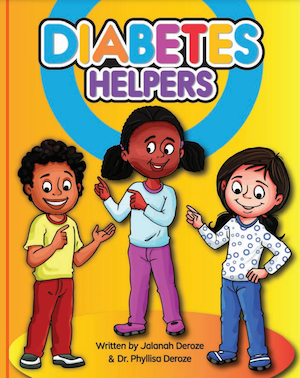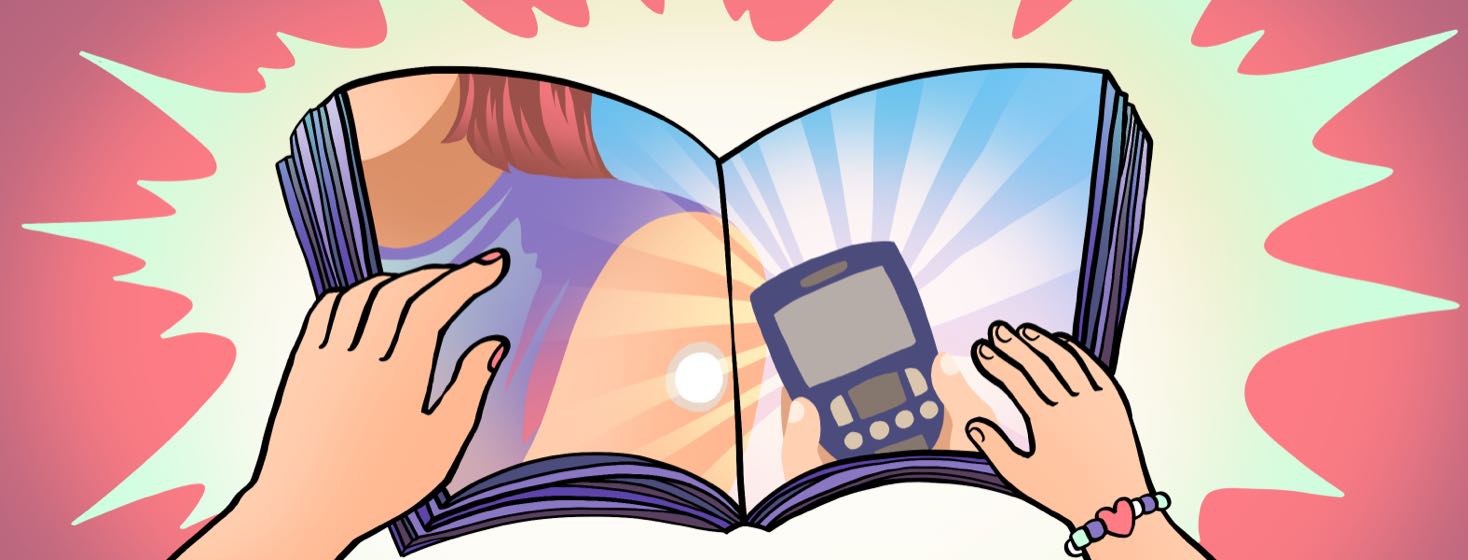Kids Can Be "Diabetes Helpers"
When Dr. Phyllisa Deroze noticed her then 4-year-old daughter mimicking how she checked her continuous glucose monitor (CGM), Phyllisa started searching for resources to help her talk about her diabetes in a way her young daughter would understand.
A book about a child's role in diabetes caregiving
Not finding any books about how to make sense of what it's like to have a parent or caregiver with diabetes, Phyllisa and her daughter, Jalanah, have collaborated to write a book. They go beyond simply explaining diabetes to share how children can become helpers.
I sat down with Phyllisa to find out more about the thought process that went into creating Diabetes Helpers and the impact she hopes it will have on children as they grow up with people they love managing life with diabetes.
Filling a gap in children's books about diabetes

Corinna: Let's talk about your book, Diabetes Helpers, a little bit. It's a project you've been working on for a while - a couple of years, yeah?
Phyllisa: Yeah, since 2018. But it started for me with the idea of needing a resource for my daughter. When I saw Jalanah mimic me checking her blood sugar with the Libre CGM, I thought, okay, I must be prepared to teach her about diabetes.
So I started searching for children's books and diabetes. But that combination only brought up children's books where the child has diabetes. Since I don't have a resource, I need to create one.
Expanding the audience
Corinna: Since that time, a couple of children's books have come out about a mother with diabetes. Notably, Mommy Beeps and My Diabetic Mama. What impact did that have on your writing your book, Diabetes Helpers?
Phyllisa: Then I got to thinking, "Was this the resource I was looking for? Like my idea, is it gone?"
But I decided, no, there was still room for my book. In these 2 books the people with diabetes are like me, a mommy. So women are creating these children's books, which I absolutely adore. But even in that, there was still space to hone in on my idea.
I realized it was much more than just a mother-daughter relationship. People have grandparents with diabetes and things like that. So I knew I wanted the book to include various relationships and various types [of diabetes], because those other books are mainly focused on type 1 diabetes, just like all the other children's books that I had read.
Also, the way I talked about diabetes in my book, I wanted it to be kid-friendly and allow parents the space to go deeper with older kids or to keep it relatively surface when the kids are younger.
A public reading of the book
Corinna: Do you feel like you succeeded in that?
Phyllisa: I do. We had a public reading of the book in Jalanah's class. I was reading before an audience of 2nd graders. This is the target audience for the book, between 1st and 5th grade.
So as I'm reading through page by page, the 2nd-grade students were just so intrigued, and they had questions, which I appreciate because it allowed me to go further.
You know, you get to see where kids are. Some pages were very surface; we got through it. And then other pages raised questions.
I could imagine a parent or grandparent, an uncle, or whoever is reading this with their diabetes helper and being free to explain diabetes in their own unique way.
Starting conversations about diabetes early is important
Corinna: It seems like the book is more of a starting point than anything else: a way to start conversations.
Phyllisa: It's definitely a conversation starter while also honoring children. It was really important to me that the book doesn't center around the person with diabetes. It centers around the children who are helping their loved ones with diabetes in various ways.
That ended up introducing a new narrative in the world of diabetes children's books. The emphasis has always been on the person living with diabetes. I centered my children's book on the children rather than the person with diabetes.
Giving children agency to be diabetes helpers
Corinna: Is there anything beyond what's in the book you want children who are diabetes helpers to know?
Phyllisa: It is in the book, but I will say it's important for diabetes helpers to ask how they can help. I say this even to adults because I often get into conversations where people talk about their loved ones having diabetes and they don't take care of themselves.
So I always respond to that with, "Did you ask what they need?" Lead with that. That is a respectful place, no matter if it's a child or an adult. Ask how you can be a diabetes helper.
This or That
Do you think that artificial intelligence (AI) will be more harmful or helpful for healthcare quality?

Join the conversation